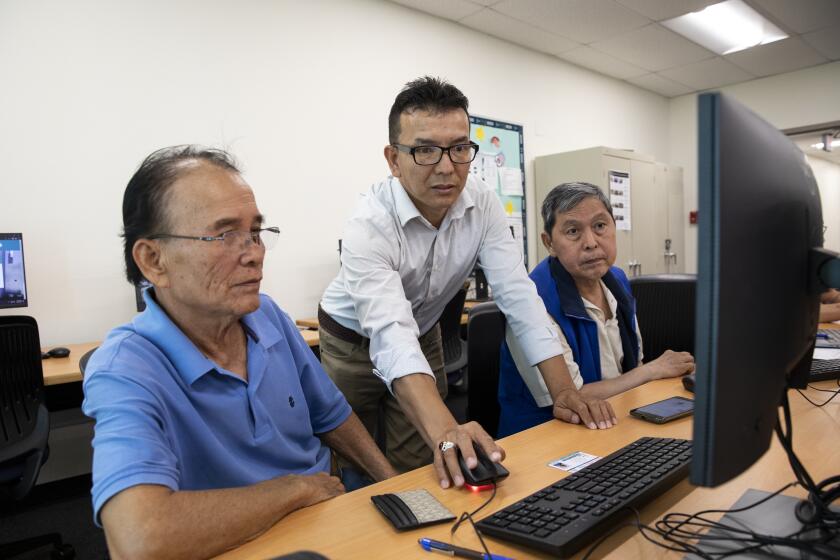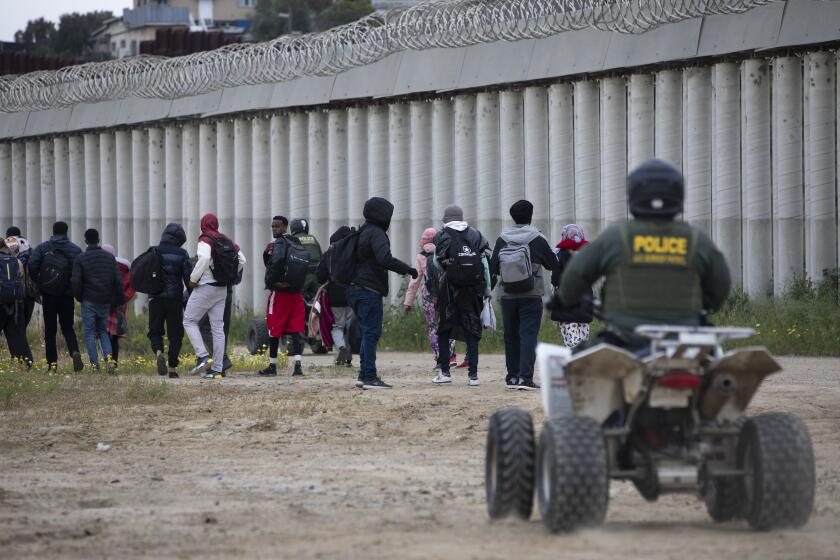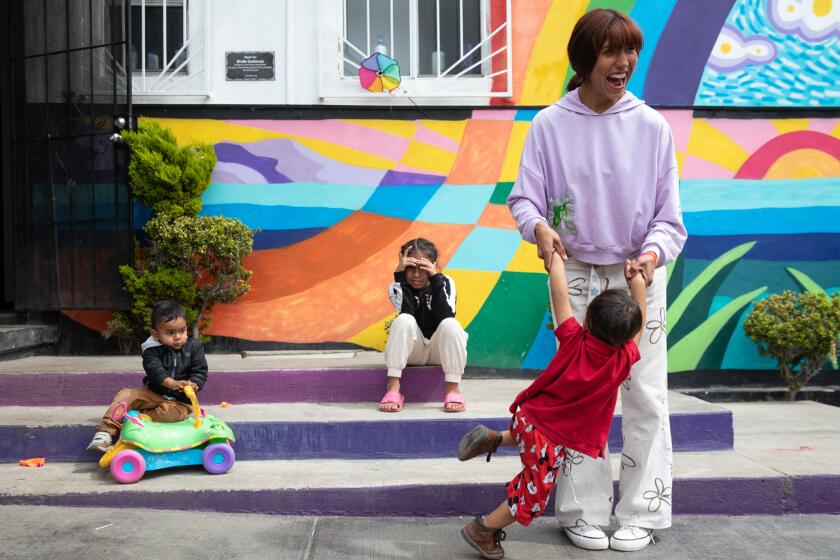Highly skilled immigrants don’t always end up in high skill jobs

Haftay Berhe, 34, was a geologist and air scientist for six years in Ethiopia before immigrating to the U.S. in 2015. Now he is a taxi driver.
“This is my only choice here,” he said. “For survival, why not? Not as a profession, but just for survival. I’m trying to live with the current situation.”
A quarter of the highly skilled immigrants in California are either unemployed or significantly underemployed, according to a study released in December from the Migration Policy Institute. That’s almost a half million people.
President Donald Trump recently announced his support for a bill that would change the U.S. immigration system to prioritize highly skilled immigrants from the current system that prioritizes family unification. If the U.S. moves toward a skill-based immigration system, the country may need to invest more resources in helping immigrants find work at their skill levels for such a change to be effective, some say.
For foreign-educated immigrants with bachelor’s degrees, 38 percent are underutilized in the California job market, according to the MPI study. Nineteen percent of those with master’s degrees are working below their skill levels as are twelve percent of those who hold doctorates or professional degrees.
Such “brain waste,” according to the study, means that California misses out on $694.8 million annually in state and local taxes that these immigrants would have paid if they had been employed and compensated at their skill levels.
Nikki Cicerani, CEO of Upwardly Global, a national nonprofit that helps highly-skilled immigrants find jobs at their skill level, said that immigrants hoping to do the same kind of work they did in their home countries face a variety of obstacles when they reach the U.S.
Some employers, Cicerani said, discredit immigrant applicants because they don’t know how much to trust foreign credentials. Immigrants applying for jobs, she added, are often used to different social norms in terms of what to put on a resume, what is expected at an interview and how much to self-promote when networking.
Some occupations, like civil engineers and doctors, have licensing requirements that immigrants have to go through before they can return to their former professions.
“Why wouldn’t we as a country want all of the people who we have allowed to come here to achieve their full potential?” Cicerani said. “In many cases, these folks have the kind of skills that are most in demand in our economy that we’re having a hard time filling.”
Moving those immigrants into needed high-skill positions frees up jobs in lower-skill tiers of the market, Cicerani said, making those jobs available to American workers who are job-hunting.
For the immigrants themselves, Cicerani said, finding work in their chosen fields can help them feel more at home in the U.S.
“Professional identity is a big piece of our total identity,” Cicerani said. “It makes them feel whole. It makes them feel like the country they’re in respects and values them.”
She said Canada, which has a skill-based immigration system, offers more robust support for highly skilled immigrants to find work that uses their abilities.
Berhe didn’t think he would struggle so much to find work that matched his skills, he said.
He has a bachelor’s degree, but that wasn’t enough to find a job in his field. He worked for almost two years at a convenience store before becoming a taxi driver about a month ago.
He dreamed of being a scientist since he was a child, he said, and he misses his work.
“With my profession, you get mental satisfaction, and you’re ensured to a life,” he said. “[As a taxi driver] you’re not ensured to a life.”
Despite the challenges, he said he still feels welcome in the U.S. and is happy to be here. His first priority is to take care of his wife and their child.
He’s not the only highly educated immigrant in San Diego’s taxi industry.
On a given day, former doctors, pilots, engineers, teachers or architects sit at the taxi hub near the airport for hours, waiting for their turns to drive over to a terminal and pick up passengers.
Emad Maroun was a business owner in Jerusalem before he came with his family to San Diego in 2004. He and his son, who has a business degree, are both taxi drivers here.
Maroun doesn’t like being a taxi driver, he said, but it’s the only way he’s been able to support his family.
He thinks the sacrifice is worth it to live in the U.S.
“I like freedom,” Maroun said. “Back home is nice, but there is no freedom for us, especially now.”
Yoseph Habte, 36, was a social sciences teacher in Ethiopia before he came to the U.S. in 2011. He specialized in geography, history and civics.
“I feel bad because I was going to school for three years to be a teacher. Here, I’m just driving,” Habte said. “Anyone can drive, but not anyone can teach.”
When he arrived, he tried applying for teaching jobs, and when no one would hire him, he tried going back to school. Driving a taxi to pay the bills while going to school was too difficult, he said.
“Being a teacher, they’re a respected job and have guaranteed income,” he said. “Over here, driving a car, everyone disgraces you. They think you’re homeless, that you don’t need dignity or respect.”
He doesn’t want to spend the rest of his life driving a taxi, he said, and still dreams of going to school to study computer science or information technology.
Izrail Slavin, a Russian immigrant who used to be a general manager in restaurants, said he’s made peace with his current occupation as a taxi driver.
He joked with other Russian taxi drivers about their former lives as they stood under a pair of umbrellas to protect them from the sun while they waited at the hub.
“We survive. The kids graduate. Everything is OK,” Slavin said.
Immigration Videos


When children are separated from their parents at the border, here is where they go next
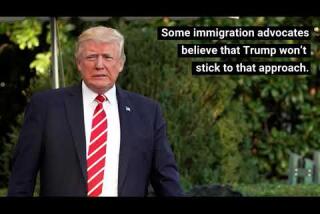
Prospects of a deal for 'Dreamers' may hinge on separating Trump from hard-liners on his staff
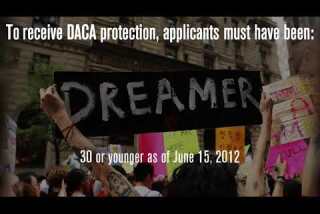
What is DACA?

Border wall prototype contractors selected
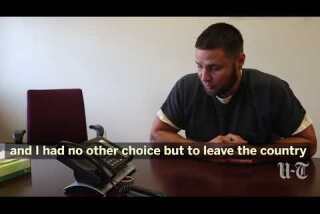
Video: Ukrainian boxer wins asylum in U.S.

30 apprehended after Border Patrol agents discover tunnel
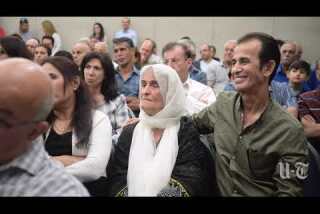
Video: Kurdish diaspora prepare to vote on independence
Follow me on Facebook for live updates about immigration news
kate.morrissey@sduniontribune.com, @bgirledukate on Twitter
Get Essential San Diego, weekday mornings
Get top headlines from the Union-Tribune in your inbox weekday mornings, including top news, local, sports, business, entertainment and opinion.
You may occasionally receive promotional content from the San Diego Union-Tribune.

